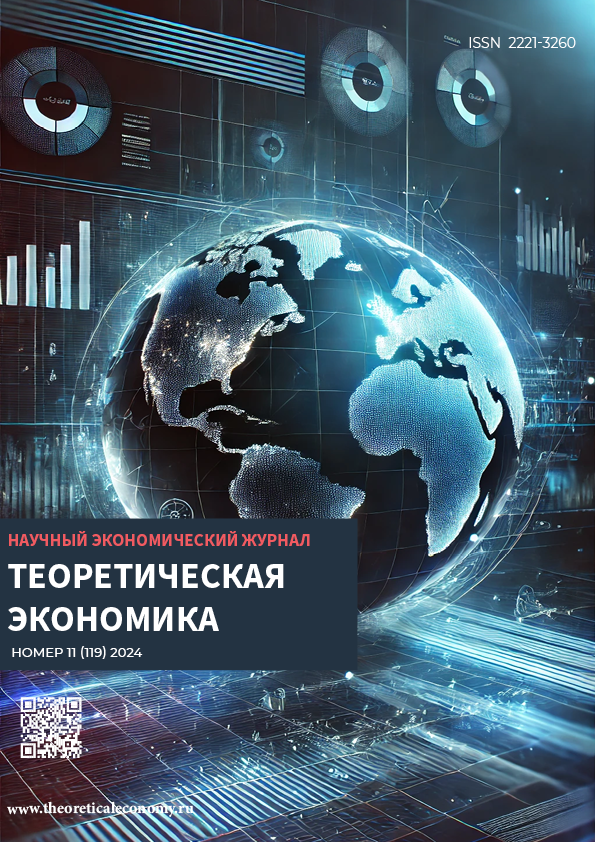graduate student
Simferopol, Simferopol, Russian Federation
Simferopol, Simferopol, Russian Federation
With the development of the digital economy and the expansion of crowd technologies, traditional investing is complemented by alternatives, among which crowdfunding is one of the most accessible and promising areas of network communications. In the current conditions of declining opportunities for traditional financing, an increase in the number of crowdfunding platform operators and an improvement in the quality of investment assistance services contributes to the development of innovations and social initiatives. The purpose of the article is a comprehensive study of the fundamental principles of the formation and development of crowd technologies to determine the substantive characteristics of crowdfunding. The objectives of the study are: analysis of the essence and formation of crowdfunding based on a study of the main approaches to the interpretation of this definition; allocation of economic and social functions of crowdfunding activities; characterization of crowdfunding models on various platforms; formation of a general and specific classification of crowdfunding, as well as determination of the advantages and disadvantages of each type of crowdfunding activities. The scientific novelty of the study lies in the systematization of interpretations and functions of crowdfunding, identification of the main types and models of public financing, identification of the advantages of using crowdfunding as one of the types of alternative investment. The authors identified social functions in addition to the economic component of crowdfunding activities; presented an algorithm for implementing a crowdfunding project, including general stages of interaction between the borrower and the operator and investors of the platform. The differentiation of models for collecting and returning funds from investors depending on the crowdfunding platforms used was revealed; the main criteria for classifying crowdfunding activities were identified: types of civil law entities (individuals, legal entities) participating in crowdfunding, and types of incentives offered by the authors of the project to investors. A conclusion was made about the advantages of using alternative financing, as well as the prospects for new crowdfunding technologies and their further research.
crowdfunding, collective financing, alternative investment, crowd technologies, crowdfunding models, digital economy.
1. What is Crowdfunding and Equity Crowdfunding? [Elektronnyy resurs] // Seedrs URL: https://www.seedrs.com/learn/guides/what- is-crowdfunding#risks (data obrascheniya 17.03.2024).
2. What is debt crowdfunding and how does it work? [Elektronnyy resurs] // Nextfin URL: https://nextfin.uk/blog/what-is-debt- crowdfunding-and-how-does-it-work (data obrascheniya 16.09.2024).
3. Ganchenko, D. N. Ekonomicheskaya ekspertiza: vozmozhnosti i problemy realizacii / D. N. Ganchenko, E. V. Belova // Ekonomika, predprinimatel'stvo i pravo. – 2023. – T. 13, № 12. – S. 6239-6254.
4. Gotovcev, D. P. Kraudfanding kak fenomen informacionnogo obschestva / D. P. Gotovcev // Lomonosov-2020: Materialy XXVII Mezhdunarodnoy nauchnoy konferencii studentov, aspirantov i molodyh uchenyh, Sevastopol', 22–24 aprelya 2020 goda / Pod redakciey O.A. Shpyrko. – Sevastopol': Filial Moskovskogo gosudarstvennogo universiteta imeni M.V. Lomonosova v Sevastopole, 2020. – S. 84-86.
5. Gusar, E. S. Ocenka vliyaniya cifrovoy transformacii na funkcionirovanie social'nyh institutov / E. S. Gusar, V. I. Gusar // Teoreticheskaya ekonomika. – 2024. – № 2(110). – S. 116-127.
6. Kaminskaya, A. O. Razvitie venchurnogo predprinimatel'stva v sovremennoy ekonomike Rossii / A. O. Kaminskaya, E. S. Gusar // Innovacionnaya paradigma ekonomicheskih mehanizmov hozyaystvovaniya: Sbornik nauchnyh trudov IX Mezhdunarodnoy nauchno-prakticheskoy konferencii, Simferopol', 15 maya 2024 goda. – Simferopol': OOO «Izdatel'stvo Tipografiya «Arial», 2024. – S. 336-339.
7. Kopasovskaya, N.G. Analiz tendenciy kraudfandinga tehnologicheskih proektov / N.G. Kopasovskaya // Vestnik NGTU im. R.E. Alekseeva. Upravlenie v social'nyh sistemah. Kommunikativnye tehnologii. – 2014. – № 2. – S. 39-44.
8. Kuz'min, A. M. Kraudfanding / A.M. Kuz'min, E.A. Vysokovskaya // Metody menedzhmenta kachestva. – 2018. – № 3. – S. 39-49.
9. Plyusnina, L. K. Kraudfanding kak social'nyy fenomen informacionnogo obschestva / L.K. Plyusina // Teoriya i praktika obschestvennogo razvitiya. – 2017. – №6. – URL: https://cyberleninka.ru/article/n/kraudfanding-kak-sotsialnyy-fenomen- informatsionnogo-obschestva (data obrascheniya: 01.09.2024).
10. Ruzmetova, O. Kraudfanding v Rossii / O. Ruzmetova. – URL: https://workspace.ru/blog/kraudfanding-v-rossii/ (data obrascheniya: 10.04.2024).
11. Sivaks, A. N. Kraudfanding kak specificheskiy vid karudsorsinga / A.N. Sivaks // Vestnik Samarskogo gosudarstvennogo ekonomicheskogo universiteta. – 2015. – № 11. – S. 31-35.
12. Shtaygenberger, N. Kraudfanding kak sposob nekommercheskogo finansirovaniya / N. Shtaygenberger N., D.V. Shkurkin // Dostizheniya sovremennoy nauki i obrazovaniya. – 2018. – S. 183 –185.
13. Yudina, L. V. Kraudfanding kak noveyshiy sposob poiska investiciy / L.V. Yudina // Postulat. – 2018. – № 5-1 (31). – S. 133-141.
 This work is licensed under Creative Commons Attribution-NonCommercial-NoDerivatives 4.0 International
This work is licensed under Creative Commons Attribution-NonCommercial-NoDerivatives 4.0 International


















